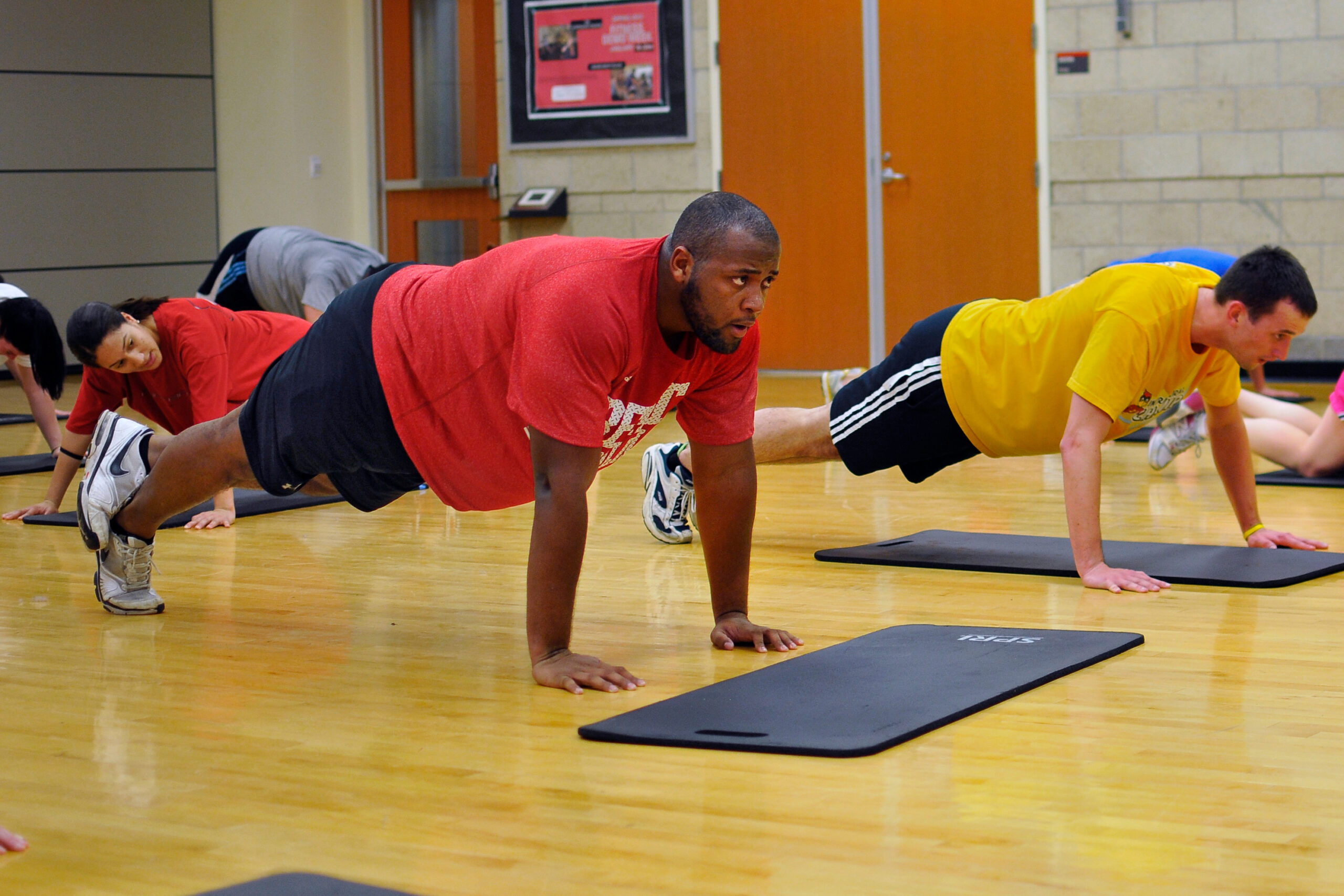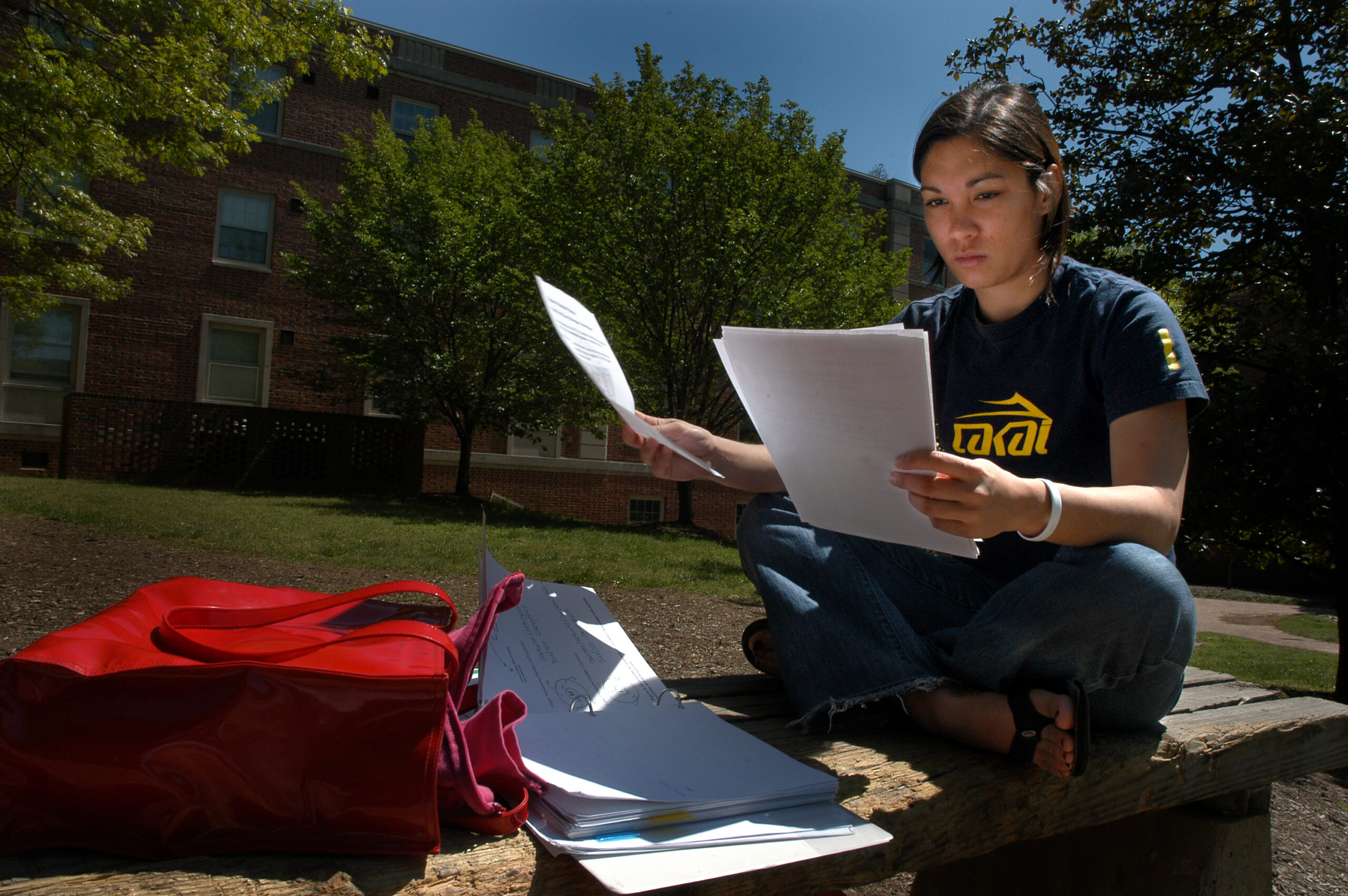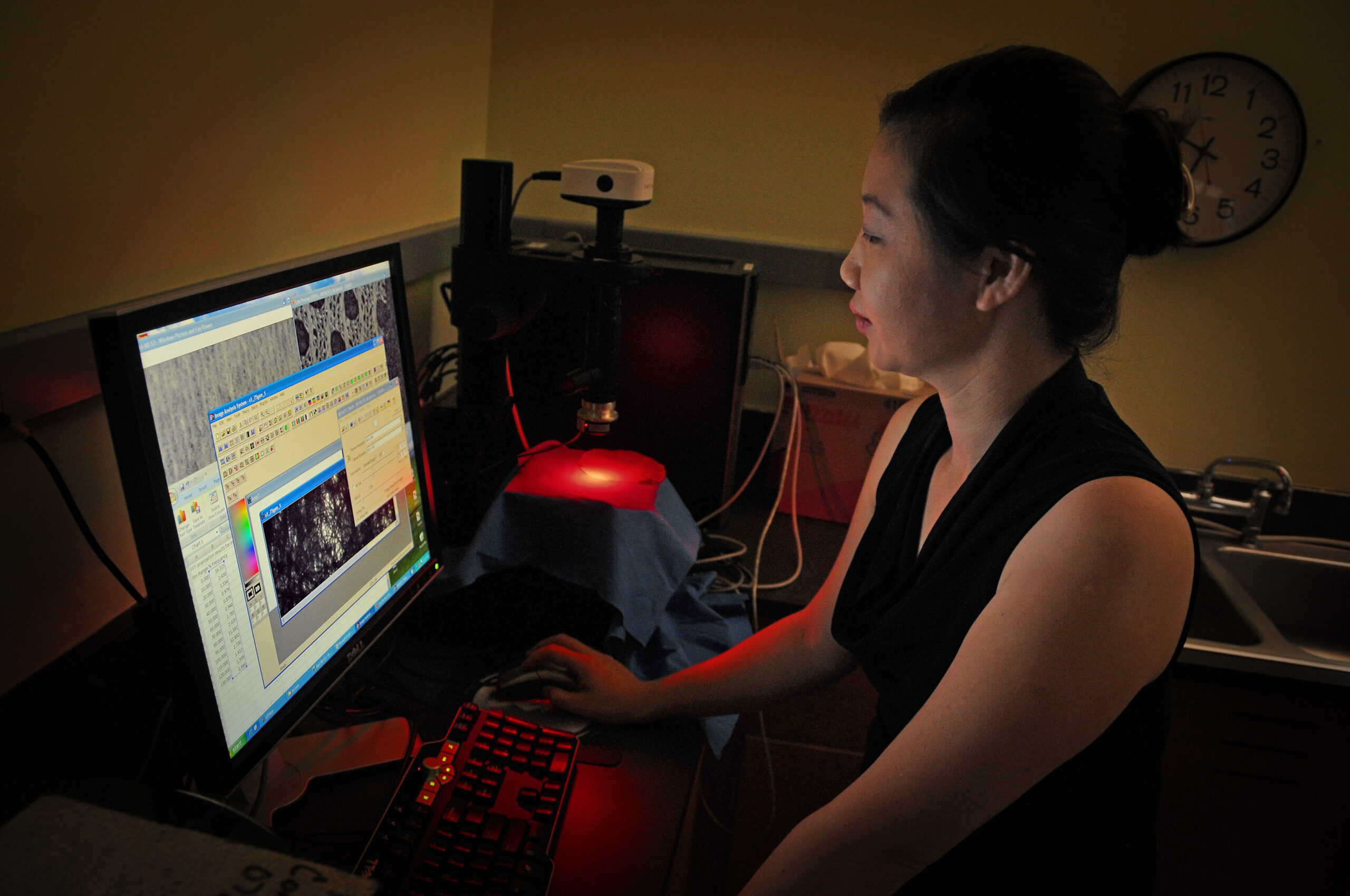HESF 113: High-Intensity Conditioning
Enjoying Lifelong Wellness Made Easy with Dr. Renee Harrington

The dynamic Dr. Renee Harrington of Health and Exercise Sciences can do everything from helping you transform into a dead bug to planning a healthy meal that will actually keep you full. In person or online, her courses focus on how students can achieve lifelong wellness that is both uniquely tailored for them and that they will genuinely enjoy maintaining. She teaches a High-Intensity Conditioning class, HESF 113, both on and offline, and creatively fosters a love of fitness in her students. “High-intensity” versus moderate intensity simply has to do with the heart rate involved while doing the exercise, and Harrington likens high-intensity to sprinting versus something of more moderate intensity like running. Her online students have access to a virtual experience in her High-Intensity Conditioning class that is virtually identical to what her in-person students have. The online class delivery is considered asynchronous because her online students do not have to attend classes at a specific time like they would in person, however. But the online students watch videos of Harrington teaching them a variety of different exercises and proper forms, which is the same as what the in-person students witness live.
Online, the asynchronous students submit videos of themselves demonstrating form and working out via a program called Panopto that is embedded in Moodle. In person, Harrington’s students do circuits in the gym, going between jump rope, dumbbells, plank work stations, etc., while timed and focusing on strength, cardio, and core work. If this class were synchronous rather than asynchronous online, then the students would log on at a certain time on class days and watch the class via Zoom or some other video conferencing platform. In-person students get into groups and give helpful feedback to each other, including performing each other’s workouts. Similarly, the online students submit videos of themselves doing the workouts they’ve created via a program called Flip, which allows other students to then watch each others’ videos and post comments, something like peer editing in an English class. At the start of every in-person class or video session, Dr. Harrington gives a mini lecture about what exercises they’ll be doing and why. Sometimes she even brings in a skeleton friend and talks about “exercise anatomy,” body alignment, and how doing a squat for one student might look different from how it would be for another. After filming hours of workout videos with techs from DELTA, she was delighted when the techs told her that they had learned healthy things from her teaching and had implemented them into their own lives.
Perhaps the largest difference other than the videos and the class environment, though, is class discussions. Online, discussions are held in a forum, and points are assigned for participation. In person, however, class attendance is required, and a student can only miss a certain number of classes before that begins to affect their grade. Both types of class format use written tests, however, with practical questions about lifelong wellness such as how many days per week someone should do cardio exercises, and for how long.
In both the live and online versions of HESF 113, Harrington emphasizes group work. She teaches students how to create fitness plans, then the students are grouped together to do things like discuss three core exercises and what primary muscles they target (such as the more-fun-than-it-sounds “dead bug” exercise), then convene together as a class and discuss what the individual groups talked about. It is important to Harrington that the fitness planning process be a “we,” not a “you” process, although the final plans are very individualized to each student. Students try different exercises, then find what they benefited from and apply that benefit to their bespoke plans. If a student is missing an exercise for her obliques, perhaps, then she and Harrington can discuss which of the ones demonstrated in class she might want to choose to add to her plan. Harrington prioritizes learning above having the right answer, and walks between groups or comments in forums and listens and encourages thoughts. She ensures that the groups are small enough for each person to give input. After assigning people to groups of 3-4 at the beginning of the semester, she then cuts back to assigning partners by the end. She loves how her students can learn from each other and learn together, making the whole process more communal and less intimidating.
Harrington’s philosophy of physical education is unique: she doesn’t want to just teach her students how to do exercises and push them to know the right answer or judge how well they perform an arbitrary fitness task. Rather, her goal is to encourage students to achieve the capability for lifelong wellness and how to implement that for themselves. She wishes her students to know exactly which parts of their bodies they are training, and how to most effectively enjoy doing that. A traditional physical education class would involve fitness tests with scales, and based on how students would perform tasks, they would receive a grade. For example, a four-minute plank could be worth a 100, a two-minute plank could be a 70, etc. But instead of this standardized fitness testing, in Harrington’s High-Intensity Conditioning class, students are given a series of 5 assignments, and they take what they learned in class, create their own personal fitness routine, then implement it and assess what worked and what didn’t.
If one of Dr. Harrington’s former students wanted to achieve healthy fitness long after taking HESF in college, they would know which exercises worked which muscle groups, as opposed to doing something like following someone on social media and just attempting to copy what the influencer was doing. Students should be able to take what they have learned in Harrington’s class and apply it to their personal workout preferences, beyond just knowing right answers or holding 4-minute planks. Harrington is a resource as her students create their own tailored workouts, and she does not allow students to take the easy way out and simply perform exercises that coaches have given them for sports conditioning.
After college, students could be intimidated by walking into a gym full of fit-looking people who all seem to know what they’re doing, especially if those students did not enjoy passing arbitrary physical fitness tests in school. Harrington’s goal is to help her students learn to enjoy physical training so that they will build healthy habits and continue them for life. She meets with her students in person, or online via videos, two times per week, for about 50 minutes per class. But if the recommended workout time per week is 150 minutes, how do students achieve the remaining time outside of class? They are allowed to use hiking, swimming, biking, a stairmaster, or other high-intensity physical activities to make up that extra time outside of class, so they have the chance to take the remaining 50 minutes and do whatever kind of qualifying exercise they most prefer during that time.
Last week, Harrington’s students had an exam and a lecture, so the physical activity for the week was drastically reduced. As a result, this week her in-person students were exhausted after one circuit around the gym’s workout stations, and did not know if they could manage a second circuit. But Harrington cheerily insisted, and she was delighted to see the deep satisfaction and elation her students shared after realizing that they had more endurance left in them than they had thought. She is consistently thrilled to take opportunities to help students achieve and enjoy lifelong wellness.
- Categories:


